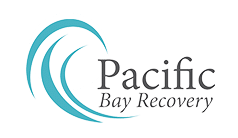Fentanyl is a powerful prescription opioid that is typically used for pain management in terminal cancer patients. Over the past decade, illegal copies of fentanyl have been introduced into the drug supply and the result is a national crisis. Read on to learn about this dangerous drug, including fentanyl overdose symptoms.
What is Fentanyl?
Fentanyl is a synthetic opioid that was introduced in the 1960s for use as an anesthetic during surgeries. Fentanyl was later approved for use as a prescription pain medication, similar to OxyContin or Dilaudid.
Fentanyl is commonly administered to terminal cancer patients in the form of a dermal patch to help manage significant pain using ongoing measured dosing. The effects of fentanyl include:
- Pain relief
- Relaxation
- Sedation
- Mild euphoria
- Confusion
- Dizziness
Fentanyl is a DEA Schedule II controlled substance and available in various forms. These include dermal patch, lozenge, liquid, nasal spray, and lingual strips. Fentanyl is about 50 times more potent than heroin and 100 times more potent than morphine.
In recent years, analogs or copies of fentanyl have been trafficked across the border, resulting in hundreds of thousands of deaths. In 2023 alone, there were about 75,000 fentanyl-related overdose deaths. Most deaths are due to illicit drugs containing the fentanyl copies, such as heroin, meth, cocaine, and counterfeit opioid pills.
About Fentanyl Abuse and Addiction
Individuals who seek out fentanyl for its effects can quickly become addicted. This powerful drug attaches to the opioid receptors in the brain and cause a flood of dopamine to be released. Chronic exposure to fentanyl causes neural pathways in the brain’s reward system to be altered. This leads to drug cravings, which perpetuates the cycle of addiction.
Some of the signs of fentanyl abuse include:
- Nodding off
- Itchy skin
- Pinpoint pupils
- Weight loss
- Chronic constipation
- Impaired judgment
- Low libido
- Withdrawing from friends and family
- Needle marks
- Sleep disturbances
- Trouble concentrating
- Slowed motor and cognitive functioning
Once addiction takes hold, the individual becomes trapped in the cycle of drug seeking, inebriation, and recovery. Signs of fentanyl addiction include:
- Taking more fentanyl for longer than intended
- Unable to quit or cut back on the fentanyl
- Needing more fentanyl as tolerance increases
- Doctor shopping for fentanyl or buying it off the streets
- Spending much time obtaining, using, or recovering from fentanyl use
- Continuing to use fentanyl despite the dangers
- Giving up activities or social events once enjoyed
- Neglecting obligations at work or home
- Fentanyl cravings
- Withdrawal symptoms
If you or someone you know is showing these signs of fentanyl abuse or addiction, it is crucial to seek professional support. Fentanyl is very dangerous and can cut a life short in an instant.
3 Types of Fentanyl Abuse
There are multiple ways that fentanyl can be intentionally misused for recreational purposes. These methods include:
- Chewing on them, which allows the drug stored to be absorbed through the mucous membranes inside the mouth.
- Applying multiple patches. In an attempt to increase the effects of the patch, the person may place several patches on their skin at the same time.
- Smoking the fentanyl. The gel inside the patch is removed and heated, creating a vapor that is inhaled.
- Fentanyl tea. The patch can be steeped in boiling water like a teabag, and then sipped like tea.
- Injecting liquid fentanyl. Some will obtain the liquefied (IV) version of fentanyl, which is then injected.
- Combined with other drugs. Some people intentionally combine fentanyl with other substances to intensify the desired high.
Recognizing Fentanyl Overdose Symptoms
Fentanyl is so powerful that even a tiny amount of the drug can be fatal. Fentanyl poisoning is often a surprise, as the person had no knowledge the substance they ingested contained the deadly fentanyl.
Because fentanyl is fast acting and very potent, time is of the essence if someone has overdosed. Fentanyl overdose is a health emergency that leaves little time for intervention.
Narcan (naloxone) is an antidote drug that can reverse the respiratory failure that has claimed so many lives by overdose. First responders and private citizens alike are trained to administer Narcan in the event of an overdose.
It is not uncommon for a fentanyl overdose to require multiple doses of Narcan to save the person’s life. Together with assisted ventilation, it is possible to reverse the effects of a fentanyl overdose.
Fentanyl overdose symptoms include:
- Low blood pressure
- Limp body
- Feeling extremely groggy or sleepy
- Difficulty breathing; slowed breathing
- Making gurgling sounds
- Pinpoint pupils
- Lacks response to stimuli
- Loss of coordination and unable to walk
- Confusion
- Dizziness
- Cold, clammy skin
- Bluish lips or fingertips
- Cognitive impairment
- Slowed heart rate
- Coma
Fentanyl Addiction Treatment
To obtain long-term abstinence from fentanyl it is essential to change the thought and behavior patterns of the addiction cycle. Once detox is completed, it is time to enter a comprehensive treatment program.
Residential treatment is the preferred level of care for fentanyl addiction recovery. The inpatient program offers a safe, structured treatment setting and 24/hour support, which provide safeguards to prevent a relapse.
Treatment for fentanyl addiction includes:
- Medical detox. Fentanyl detox is carefully managed by a medically-trained withdrawal management team.
- Individual psychotherapy. Therapy involves evidence-based therapies like CBT to guide the person toward embracing healthy thought and behavior patterns. The therapist will also introduce new coping skills to help safeguard recovery.
- Group counseling. Group therapy provides the social support that is central to addiction treatment. Under the guidance of a therapist, group members share their personal feelings and experiences and encourage each other.
- Medication. Drug therapy is included in the fentanyl recovery plan for the first 6-12 months. The substitute drug can help reduce the risk of relapse.
- Coping Skills. Essential life skills like conflict resolution, problem solving, and communication skills are taught. These recovery skills help the person avoid relapse.
- Holistic. Holistic activities that help promote relaxation and reduce stress in the treatment setting. These might include massage therapy, cupping, yoga classes, and acupuncture.
Pacific Bay Recovery Offers Residential Treatment for Fentanyl Addiction
Pacific Bay Recovery is a leading addiction and dual diagnosis treatment program that can help someone battling fentanyl addiction. If you or a loved one has experienced fentanyl overdose symptoms, you will need recovery guidance and support. Please reach out to our admissions team today at (619) 350-8220.


